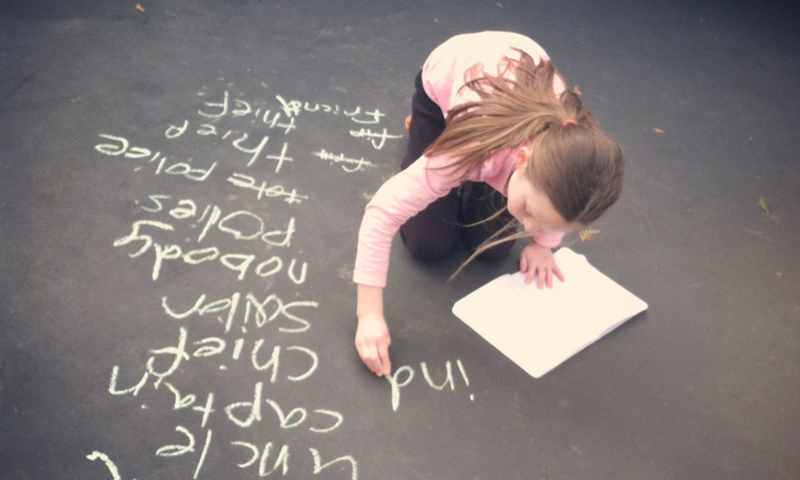By Maria Davou
“You can’t really copy anybody and end with anything. If you copy, it means you’re working without any real feeling.” — Billie Holliday
It’s been more than 15 years now that I have asked my teaching team to stop assigning Copywork to our students. I found zero resistance from them. I think everyone was relieved to get rid of this mechanical, empty-of-meaning activity that has, however, been a standard practice for years, or centuries, or millenia!
What is Copywork?
By Copywork, I mean the expectation that our (usually young) learners will copy (more often) a word or (less often) a sentence 4, 5, n times in their notebook. This is supposed to be helping them with a) handwriting b) writing c) orthography d) (even!) meaning.
Why I don’t like Copywork
For a number of reasons
To begin with, I find it empty. It lacks meaning, content and context. Learners write mechanically the same thing several times. What is the use of that other than associating the beauty of learning a new language with mechanical training and boredom? Go back to those years when you had to do it as a student. Remember the ‘fast-way’ of doing it? We were writing the letters vertically instead of the words horizontally. And we were to cheat: when it’s boring, why do it? Chidren want to do things that make sense.
But let’s take it step by step and see if Copywork helps with what it is supposed to be helping.
a) Handwriting: indeed practicing how to write letters or words makes you better at handwriting. And handwriting is an important skill even in this keyboard-touchscreen regulated world. However, why would you have to copy the same thing several times to get better at handwriting? Why not write different things at all times? Instead of writing 5 times the word ‘dog;, why not write something about your dog? Or facts about dogs that you copy from a site about dogs? Or part of a story about dogs? This helps with handwriting too and guess what: it’s meaningful!
b) Writing: and I mean, Writing as a skill. Well, an author I know (and a Teaching Writing expert) once told me, ‘the more students write about things they like, the better writers they become on anything’. And so that’s been my Writing mantra since then. I want my students to write about what they want to write about. Things that interest THEM. Things that inspire THEM. Things initiated, emerging by THEM. So, I’m quite certain that writing 5 times the same word is not very learner-led or engaging.
c) Orthography: that’s a tricky one. Intuitively, one would think that the more you copy something, the more it stays in your memory, right? Interestingly though, when we are disengaged, our long-term memory does not store information. You need some kind of experience to remember things, be it an emotional experience, a thought experience. By just doing something several times, you might in fact forget about it faster because it’s not connected to any stimuli that will involve you in the process of learning. You are bored. You brain is bored. Where is the synapsis? Bored too.
d) Meaning: much too often, learners will write the word ‘dog’ 5 times and then its meaning in their first language. The assumption is that the learner will remember the meaning of the word because they copied it several times. Well, let’s see how we learn the meaning of words then. The research shows that the best way to learn words is when they are related to each other in a kind of story line. (Bourns, Krueger, Mills. Perspectives on Teaching Language and Content. 2020: Yale University Press). What does this mean? That, no, they will not remember the word ‘dog’ better because they copied it 5 times. They will remember it better if you tell them a story with a dog. Or if you show them a picture of your dog and you talk to your learners about it. Or if you give them a sentence about a dog and you ask them to visualize it, then draw it, then say it, then write it. So teach them through the sentence ‘the dog was chewing on a bone’ and they will remember ‘dog’ through a meaningful context.
As teachers however, we need to make sure that our young learners practice Writing, learn correct Spelling, and know the meaning of the words we teach them. And there are beautiful ways of doing that! I just can’t help but wondering why we are stuck to the past and why changing (unlearning and relearning) is so hard in our field, the field of …learning.
So now that we got rid of Copywork, let’s see what we can do with them that helps them acquire the language without asking them to use old-fashioned techniques that really also teach them to be more restricted, more unemotional, less creative and less childlike!
